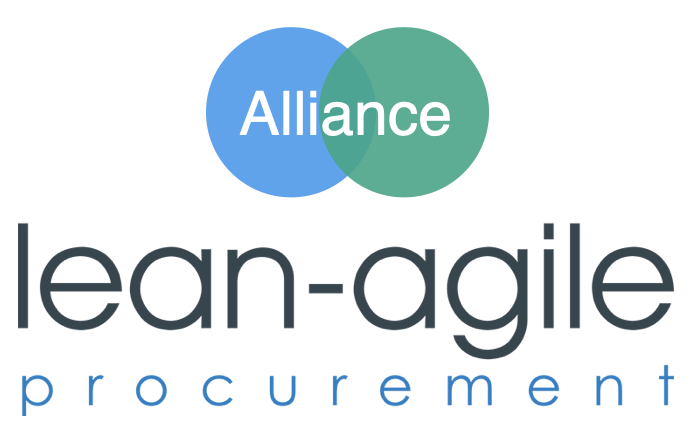🇨🇭F-35 Procurement – A Scandal foretold?!
F-35 – Unfortunately, yet another procurement scandal at the Swiss Department of Defense. Plenty of press, plenty of frustration – but very little constructive debate.
I've been following public procurement around the world for years, and Switzerland is far from alone when it comes to major scandals:
🇺🇸 Boeing 787: $6 billion → $32 billion
🇨🇦 Phoenix Pay System: CAD 310 million → up to CAD 5 billion
🇩🇪 Berlin Airport: €1 billion → €6 billion
🇬🇧 NHS IT Program: £6.4 billion → ~£10 billion
Just to name a few. You’d think we’d learn from this. But unfortunately, the reaction is often: more #control, more #regulation, less #trust—both in procurement agencies and suppliers. A true #lose-#lose situation.
To be clear: I don’t believe anyone acted with bad intentions. No one sets out to cause a scandal—not even in the current F-35 case (compare with official Report in German). What we’re really dealing with is a #systemic #problem.
And that’s what makes the situation so difficult: Existing processes and frameworks only help to a limited extent—they don’t address the root causes. A hammer isn’t always the right tool.
👉 I want to address those root causes. What practical steps can we take to reduce risk for all parties? To use taxpayer money more effectively? To make procurement processes faster and more efficient? Where do we start?
Not in theory—but hands-on and measurable.
💬 Got specific questions? Drop them in the comments—I’ll address them.
📩 Facing concrete challenges? Send me a message.
Image Source: breakingdefense.com
My Observations and Recommendations – Practical, Hands-on, and Measurable
Mirko Kleiner - I’ve been following Switzerland’s procurement of new fighter jets since 2019. For those interested in the full timeline, Watson has provided a great summary: [Watson article in German].
First off, I was not directly involved and therefore have no first-hand insights. My observations are derived from publicly available information. I may be misjudging some individuals since I cannot know all the details.
Still, I would have liked to contribute my experience, because what I’ve seen so far strongly suggests that the F-35 procurement was a scandal foretold.
Below are my initial observations of the F-35 procurement process, including a systematic context and practical recommendations for improvement.
🧩 Observation #1 – Outcome or Prestige?
Switzerland has committed to neutrality and, broadly speaking, only requires defensive systems. In peacetime, fighter jets are used for air policing. This raises a fundamental question: Why does Switzerland need new fighter jets—and specifically an F-35, a stealth-capable attack bomber?
This appears to be the first dilemma for procurement authorities. My assumption: At the time of procurement, Switzerland's defense strategy wasn’t up-to-date. And so, there was no clarity about what future air defense capabilities were truly needed. The retirement of current jets doesn’t automatically mean new fighter jets are the right solution.
There’s also a strong indication that decision-makers were dazzled by the best tech available, which led to overbuying. For example, is stealth capability really necessary?
This inevitably leads to more demanding requirements and higher costs.
My recommendations – Practical, hands-on, and measurable:
Strategic alignment: Every procurement should be grounded in the bigger picture—here, the national defense strategy. If this doesn’t exist or is outdated, it must come first. Analogous to private-sector investments, procurement should follow strategy. In this case, that might have led to different solutions: drones, hybrid systems, or European collaborations.
Outcome-based: Requirements should be defined by outcomes, not technical specs only. For example: “Intercept flying object within X minutes.” This opens up different solution paths. Prioritized needs help avoid “nice-to-have” features that drive up costs. Cost savings of 20%+ are realistic—equivalent to US$1.2 billion in this case.
Clear boundaries: Strategic direction must include legal, technical, and financial constraints. For example, a Total Cost of Ownership (TCO) ceiling over the system’s full lifecycle.
🧩 Observation #2 – Serious Evaluation or Just for Show?
Which providers are even eligible? In procurement terms, this falls under market research and evaluation. Regardless of whether an open or selective process is used, evaluations depend on criteria based on needs, strategy, and market intelligence.
Before the vote, a balanced evaluation catalog was communicated. But if the needs weren’t clearly defined, the evaluation couldn’t have been robust. And there’s the suspicion that a favored solution was “wanted” from the beginning.
The idea that the U.S. offer was the best is questionable. There are numerous reports—even from the U.S. itself—of the F-35 being underdeveloped. Ongoing technical problems and massive cost overruns are well-documented. Just Google “F-35 scandal.”
Also, reports say Swiss pilots couldn’t properly test the plane because it’s only available as a single-seater. In other words, they bought it sight unseen.
My recommendations – Practical, hands-on, and measurable:
Wider evaluation criteria: Include references, performance data, and cost histories from other countries. This improves transparency and avoids the infamous “salami tactics” of low initial bids followed by costly upgrades.
Clear disqualification criteria: Vendors with repeated issues elsewhere should be automatically disqualified. Period.
Independent procurement team: Cross-functional, empowered, and ideally shielded from political interference.
Jointly developed evaluation logic: Include military, legal, and technical experts early on to co-create criteria.
Ensure comparability: If practical tests (like in the F-35 case) can’t be done, compensate in the evaluation or document the limitation transparently.
🧩 Observation #3 – Fixed Price? It’s Complicated
Fixed-price contracts are often seen as safe. But for complex projects, that safety is mostly illusionary—unless the scope is 100% clear.
Swiss voters approved a CHF 6 billion budget cap - a fixed price by law. Procurement teams seem to have handled it responsibly: locking in exchange rates, factoring inflation, and requesting full TCO estimates.
Still, the question remains: What exactly did the contract cover? My guess is that rather than outcome-based needs, it focused on features and functions—leaving room for interpretation and cost creep.
Worse, reports suggest that the fixed price wasn’t backed by Lockheed Martin. Also, the U.S. terms apply, with no defined dispute resolution.
My recommendations – Practical, hands-on, and measurable:
Transparent commercial terms: Clearly state budget constraints and define what is included—ideally based on TCO.
Focus on needs, not solutions: Price should be tied to outcomes and support requirements.
Control the contract: Swiss law should apply. The buyer defines the rules—not the vendor.
Collaborative subcontracting: Involve strategic subs during evaluation to jointly assess risks. Consider open-book pricing models to prevent supplier abuse.
Iterative delivery: Especially for innovations, define prioritized options that can be activated progressively—this reduces risk and improves ROI.
🧩 Observation #4 – Is the F-35 a Bottomless Pit?
Now comes the toughest question: “Cut losses or push through?” If there are no procedural or contractual errors, the current deal stands.
Fact 1: The CHF 6 billion cap can’t be honored without cutting back. Since the number of jets wasn’t specified, this is legally okay but publicly problematic.
Fact 2: Experts warned operating costs would be far higher than quoted. That means likely reductions in scope or quality.
And with ongoing technical issues, the F-35 risks becoming a bottomless money pit.
My recommendations – Practical, hands-on, and measurable:
A cap is a cap: The government is legally bound to CHF 6 billion. If that’s not enough, options must be reduced—or the U.S. must offer concessions.
Exit scenario: Good practice is to define an exit strategy upfront. This could mean a temporary pause to assess the situation, without further payments.
Reassess needs: Take this opportunity to revisit whether the original assumptions still apply. The strategic landscape has changed.
Personally, I can’t fully judge the technical or operational aspects. But my gut says: the contract should be halted, needs redefined and prioritized—and a leaner, more reliable solution pursued.
For more on Lean-Agile Procurement and international public-sector success stories: https://www.lap-alliance.org/resources/our-blog


